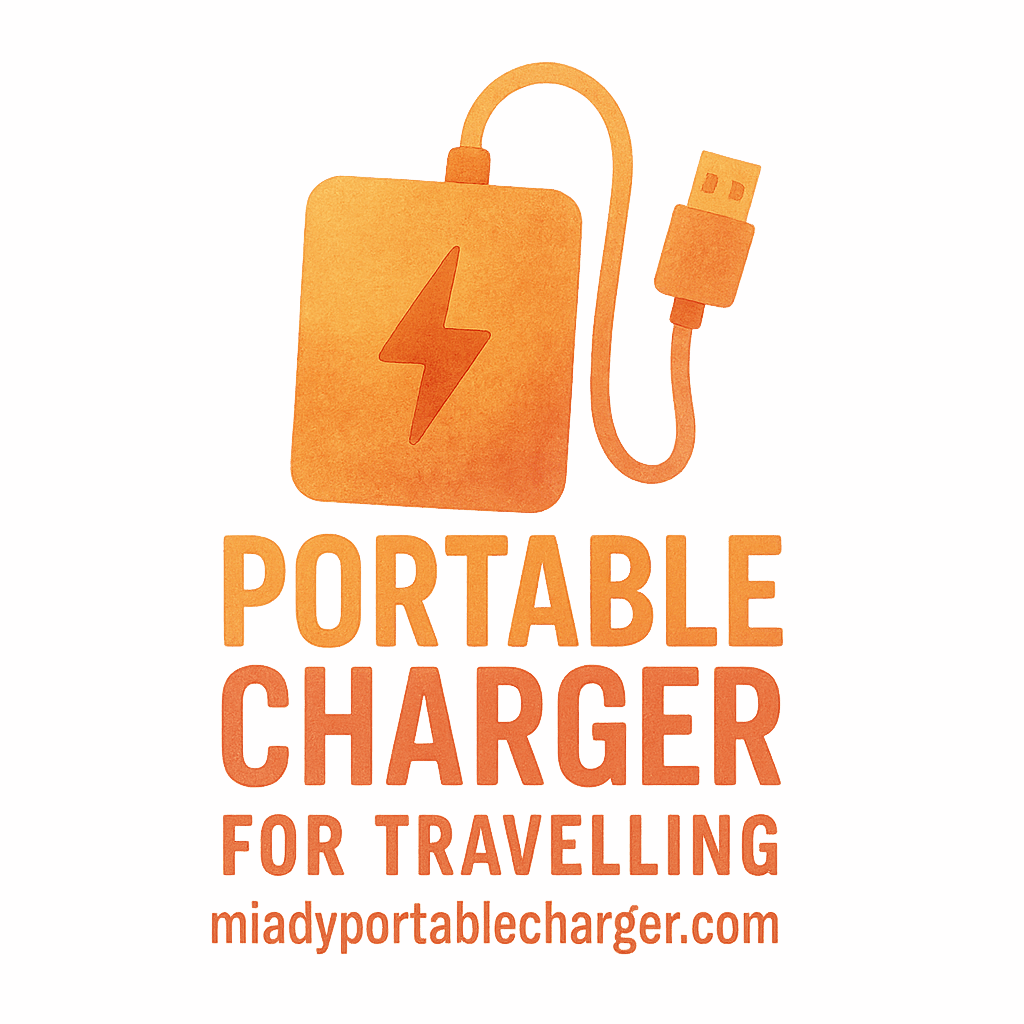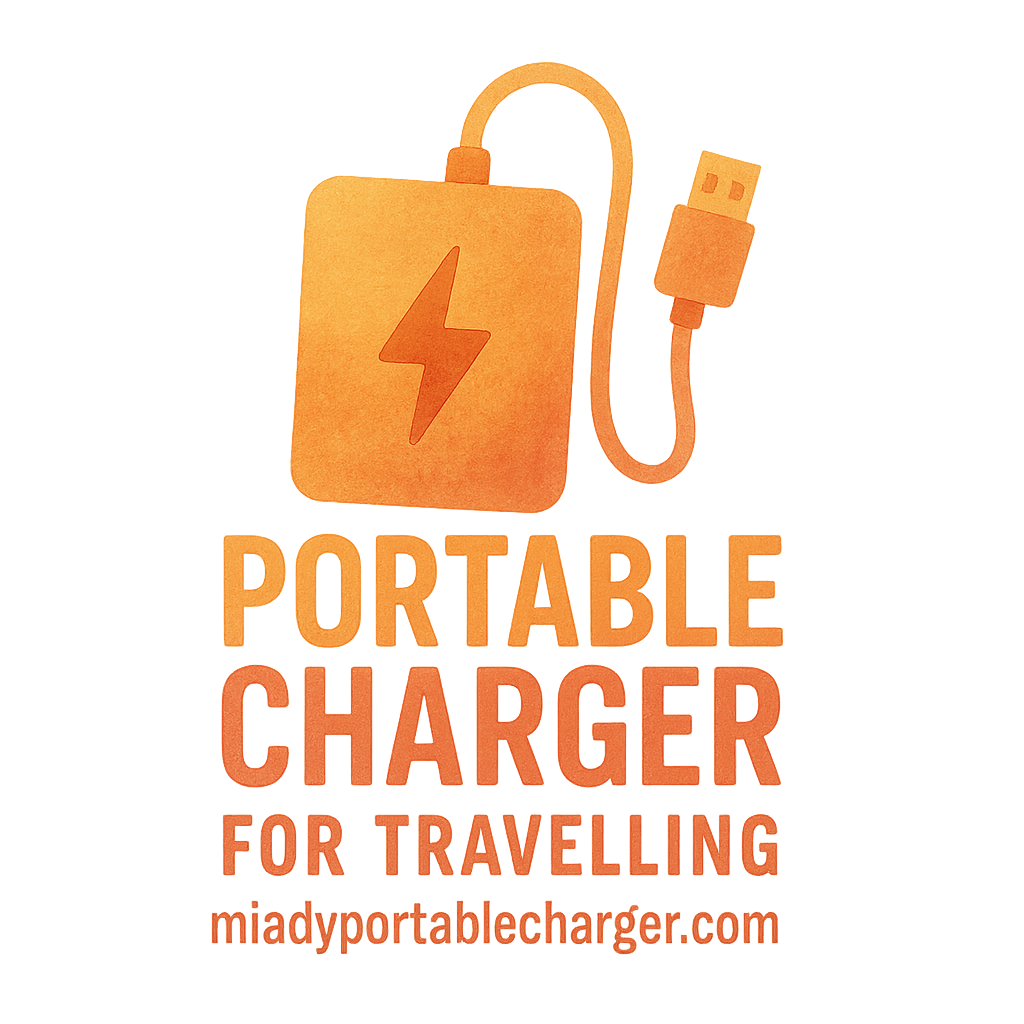Traveling can be exhilarating, but nothing brings you back down to earth faster than a dead phone in the middle of an adventure. Whether you’re exploring a bustling city or trekking through the wilderness, a portable charger can be a lifesaver, ensuring your devices stay powered up. But with great power comes great responsibility—using a portable charger comes with its own set of safety considerations. In this guide, we’ll cover 6 portable charger safety tips for travelers to keep you and your devices safe on the road.
Why Portable Chargers Are Essential for Travelers
In today’s tech-savvy world, a portable charger is a must-have travel essential for any trip. Whether you’re navigating unfamiliar streets or relying on your phone for directions, having a fully charged device is critical. From photos to emergency calls, your phone is your lifeline when you’re away from home. And while it’s tempting to just plug in any charger, using a poor-quality or damaged one can lead to dangerous situations. That’s why safety should always be a top priority when using portable chargers during your travels.
For more on what travelers need in terms of charging tips, make sure to visit our travel essentials section.
Common Risks Associated with Portable Chargers
Though portable chargers are incredibly convenient, they also come with inherent risks. Here are some of the common issues travelers might face:
- Overheating: Overcharging or using a charger in a hot environment can cause your charger or device to overheat, leading to potential damage or fire hazards.
- Short Circuits: Faulty cables or non-certified chargers can cause electrical malfunctions, damaging your devices and posing safety risks.
- Battery Degradation: Over time, using subpar chargers or overcharging can degrade the battery inside your portable charger, reducing its lifespan and efficiency.
To help mitigate these risks, follow these six portable charger safety tips.
Tip 1: Use Certified Charging Cables and Adapters
When you’re on the go, it’s tempting to use any charger you can find, but it’s crucial to always use certified charging cables and adapters. Low-quality or counterfeit cables can pose serious risks to both your charger and your device.
Understanding the Importance of Certification
Certified cables, such as those marked with MFi (Made for iPhone) or UL (Underwriters Laboratories) certification, have been tested to meet specific safety standards. These cables are designed to ensure that power is transferred efficiently and safely to your device.
For a more detailed guide on the importance of using certified chargers, check out this buying guide.
How to Identify a Certified Cable
Before purchasing a cable or charger, always check the product description for certification logos. A high-quality, certified cable will typically be more expensive than an uncertified alternative, but it will protect your devices in the long run.
For more on how to spot high-quality chargers, refer to the Product Reviews section for insights on the best portable charging options.
Tip 2: Avoid Overcharging Your Portable Charger
It’s easy to think you can leave your portable charger plugged in all night, but overcharging is a serious issue. Overcharging can lead to battery degradation and safety hazards, as the charger generates heat during the process.
The Risks of Overcharging
Leaving your portable charger plugged in for too long can cause the battery to overheat. This not only shortens the charger’s lifespan but can also create a fire risk. In some cases, an overheated battery can swell or leak, causing serious damage to both your charger and the device.
Using Smart Chargers to Prevent Overcharging
To avoid overcharging, always use a smart charger that automatically stops charging once your device reaches 100%. These chargers are designed to prevent the risks associated with overcharging and ensure the safety of your equipment.
For more information on chargers with smart technology, visit our charging tips page.
Tip 3: Keep Your Portable Charger in a Safe Place
Storing your portable charger properly is crucial to preventing damage and accidents. Exposure to extreme heat, moisture, or rough handling can harm the internal components of your charger, reducing its lifespan or causing malfunctions.
Preventing Damage from Heat and Moisture
Extreme temperatures and moisture are two of the most common causes of charger damage. Never leave your charger exposed to direct sunlight or in a hot vehicle. Similarly, if you’re traveling through rainy or humid environments, make sure your charger is protected from water.
Ideal Storage Locations for Portable Chargers
When not in use, always store your portable charger in a protective case or a secure location. If you’re heading on an outdoor adventure, check out this section on rugged chargers that can withstand more demanding conditions.
For more tips on safe storage, you can also refer to our Travel Gear section.

Tip 4: Do Not Use a Damaged Charger
One of the easiest ways to prevent accidents is to never use a damaged charger. If your charger has frayed wires, a loose connection, or any other visible damage, stop using it immediately. A damaged charger can lead to short circuits, overheating, or other dangerous issues.
Identifying Charger Damage
Inspect your charger regularly for visible signs of wear, such as exposed wires, cracks in the casing, or a bent plug. If the charger feels hot to the touch during use, it could also be a sign that it’s damaged and unsafe to use.
What to Do with a Damaged Charger
If your charger is damaged, replace it as soon as possible. Many brands offer warranties, and faulty chargers are often eligible for replacements. Never attempt to repair a charger yourself unless you have the proper skills.
Tip 5: Check Battery Health Regularly
Just like your phone, the battery in your portable charger can degrade over time. A charger with a weakened battery may overheat more easily or fail to charge your devices properly, posing safety risks.
How Battery Health Affects Safety
A degraded battery is not only inefficient but also more prone to failure. If the battery in your charger starts to lose capacity or show signs of swelling, it could be time to replace the charger before it becomes a hazard.
Tools and Apps for Checking Battery Health
Some portable chargers come with built-in tools or apps to monitor the health of the battery. You can also use apps on your smartphone to check the health of your charger. Keeping an eye on the battery’s health will ensure you’re using a safe, fully functional charger while traveling.
For more information on monitoring charger health, visit our checklist section.
Tip 6: Use a Waterproof and Shockproof Charger for Outdoor Adventures
If you’re an adventure traveler, consider using a waterproof and shockproof charger. Whether you’re hiking through the rain or navigating rocky terrains, these rugged chargers can handle harsh conditions without compromising performance.
Why Waterproof and Shockproof Chargers Are Ideal
Waterproof chargers are built to resist rain, snow, and even accidental submersion, making them perfect for outdoor use. Shockproof chargers, on the other hand, can survive drops and rough handling, which is common during adventurous activities.
Best Rugged Chargers for Adventurous Travelers
Look for top-rated rugged chargers like the Anker PowerCore series or the Goal Zero Sherpa 100AC, both of which offer impressive durability and protection from the elements.
For more on rugged chargers, visit our page on high-capacity outdoor chargers.
Conclusion: Stay Safe and Charged Up While Traveling
By following these portable charger safety tips, you can keep your devices powered up and safe, no matter where your travels take you. Always use certified cables, avoid overcharging, store your charger properly, and inspect it for damage regularly. And for outdoor adventures, don’t forget to use waterproof and shockproof chargers to withstand the elements. Stay safe, and happy traveling!
For more tips and products for your travel adventures, check out our comprehensive Travel Power section.
Frequently Asked Questions (FAQs)
- What happens if I overcharge my portable charger?
Overcharging can damage the battery, reduce lifespan, and even cause overheating. Use chargers with smart shut-off technology to prevent overcharging. - Can I use any USB cable with my portable charger?
No. Always use certified cables to avoid short circuits and damage to your devices. - How can I tell if my portable charger is damaged?
Look for signs like frayed wires, bent connectors, or excessive heat. If the charger seems off, replace it immediately. - Are waterproof chargers safe for regular use?
Yes, they’re designed to withstand rain and splashes. Waterproof chargers are excellent for outdoor and extreme weather conditions. - How often should I check the health of my charger’s battery?
Regularly inspect your charger’s battery, especially before long trips, to avoid any malfunctions. - Can I repair my damaged portable charger?
It’s safer to replace the charger rather than attempt repairs, as fixing electrical components without proper knowledge can be dangerous. - What is the best portable charger for outdoor activities?
Look for rugged, waterproof chargers like the Anker PowerCore or Goal Zero Sherpa, which are built for tough outdoor conditions.


